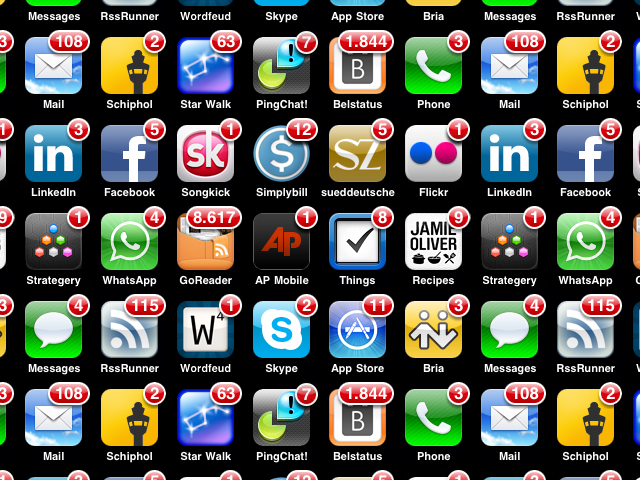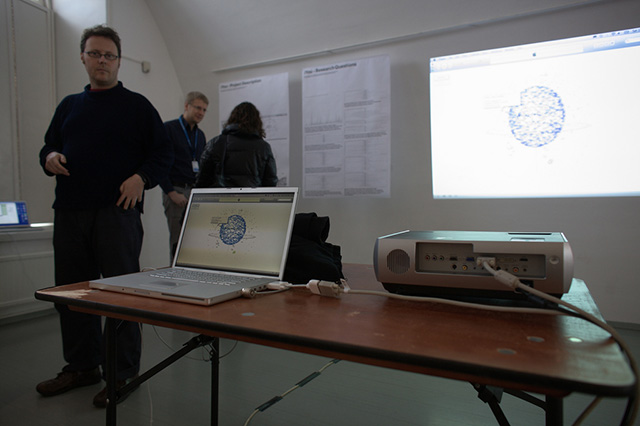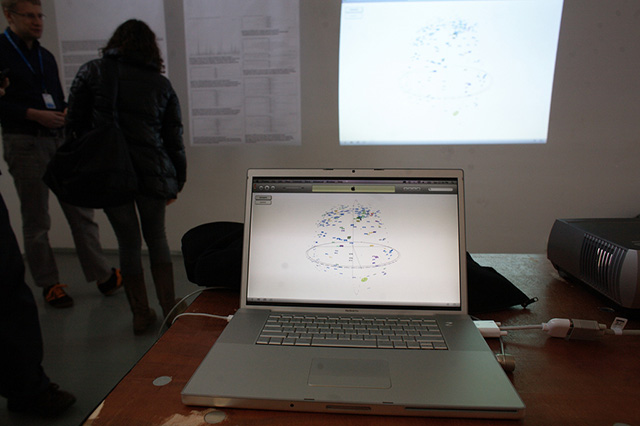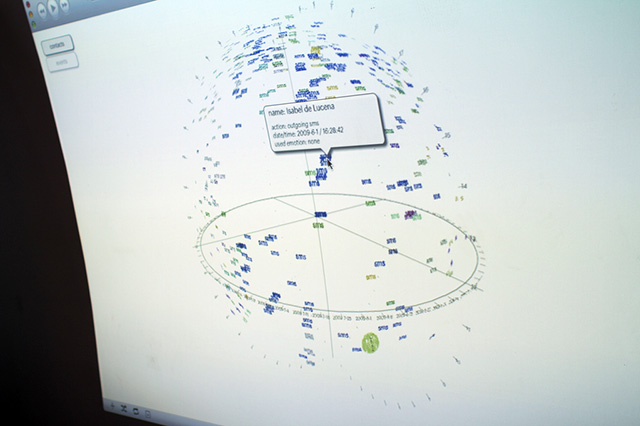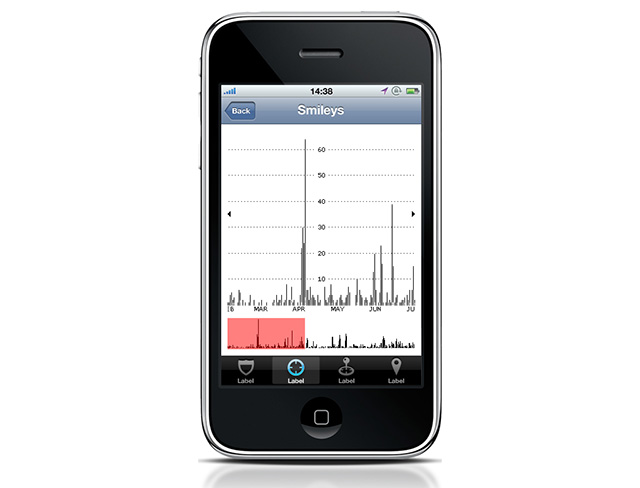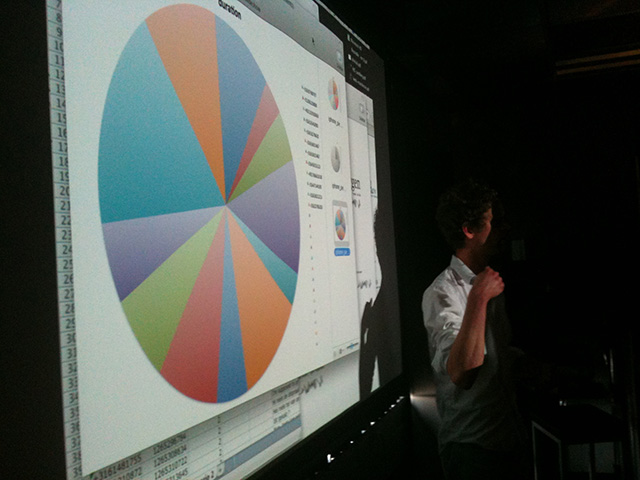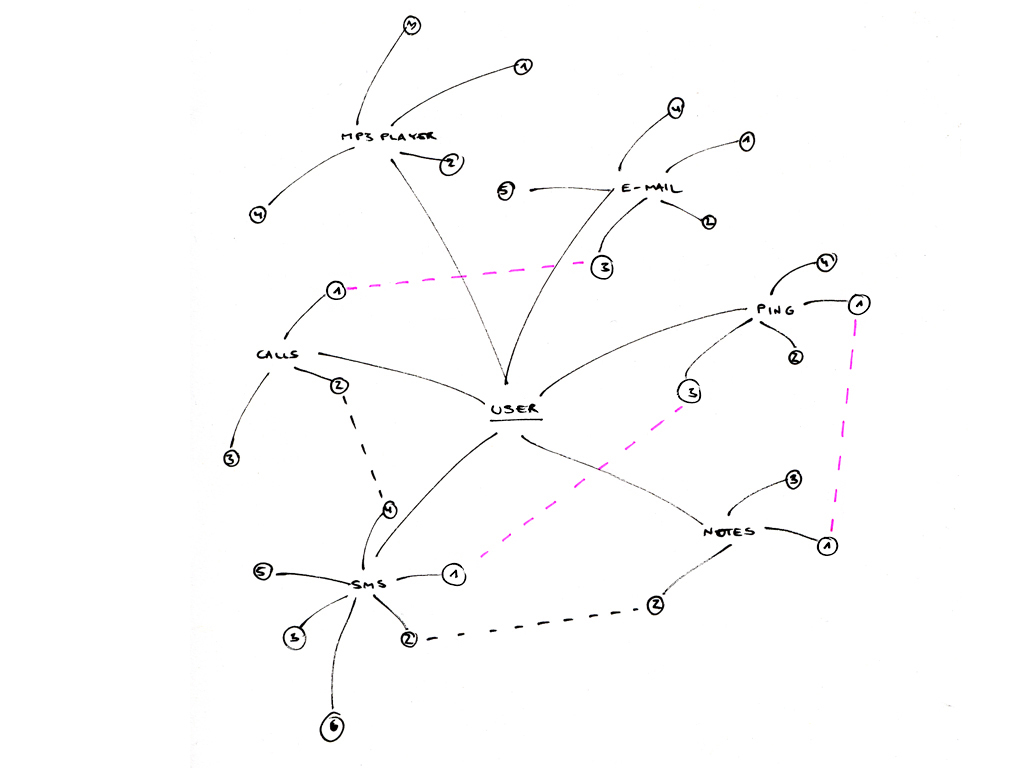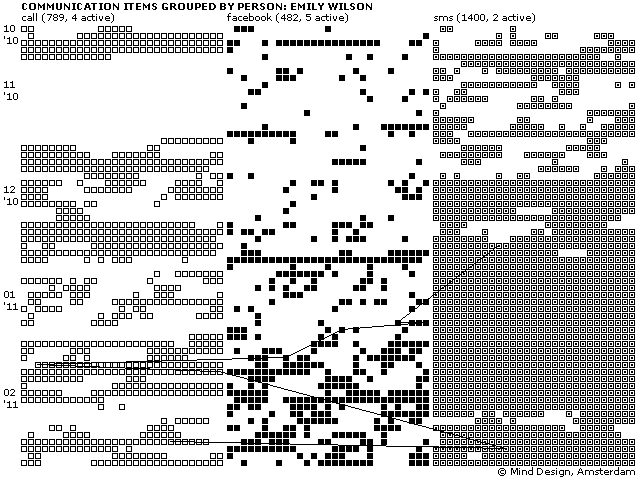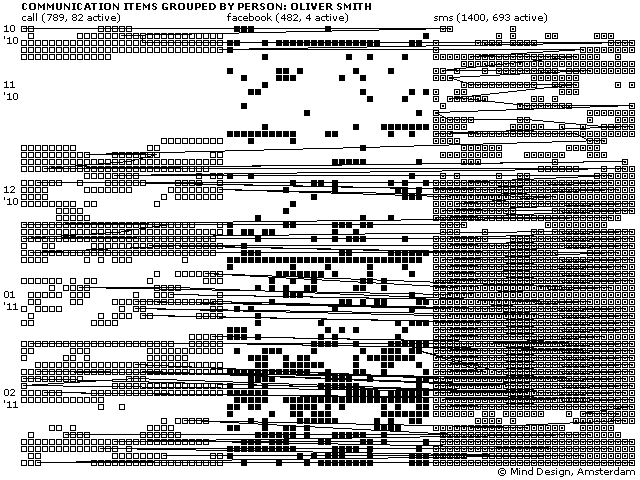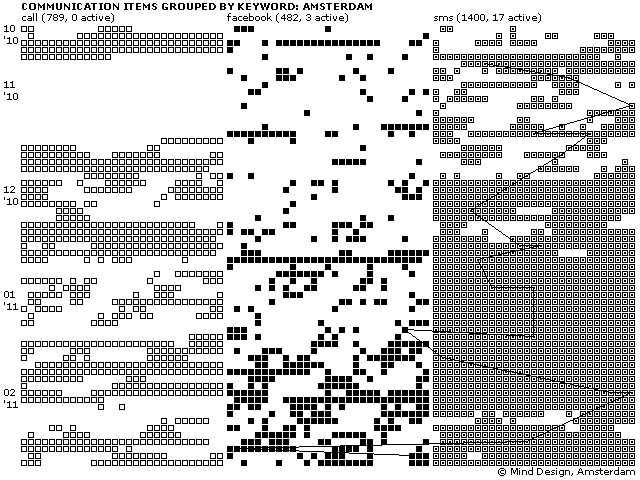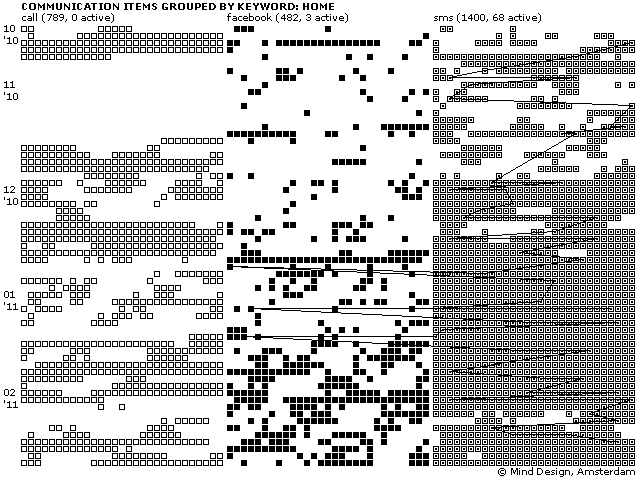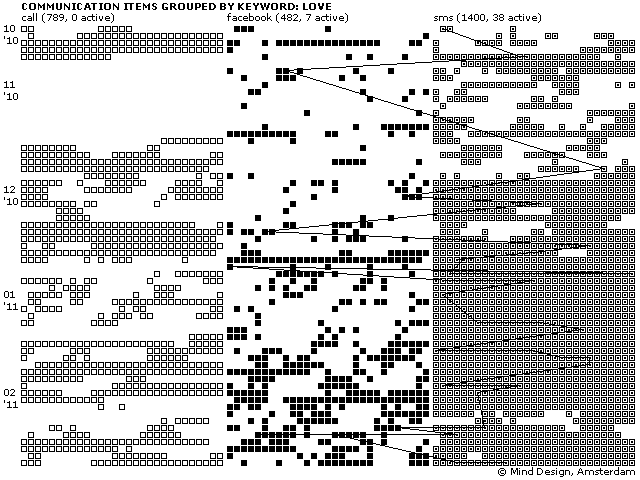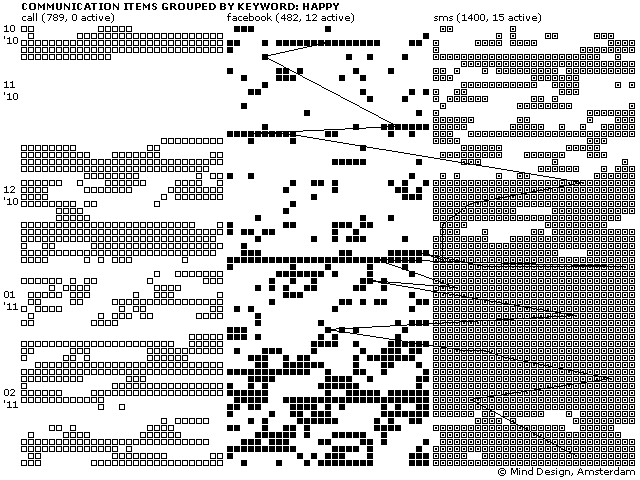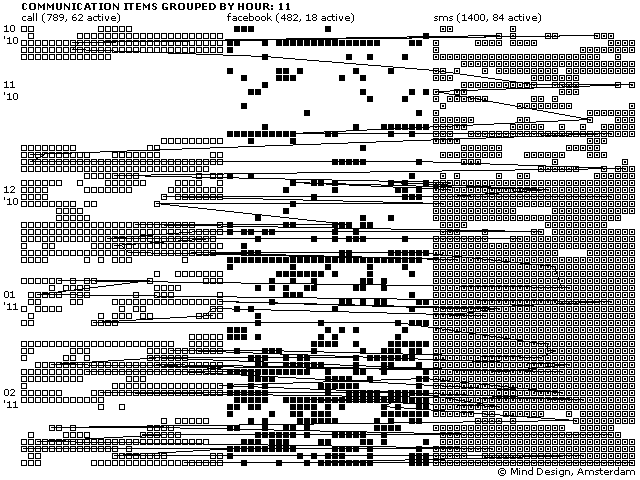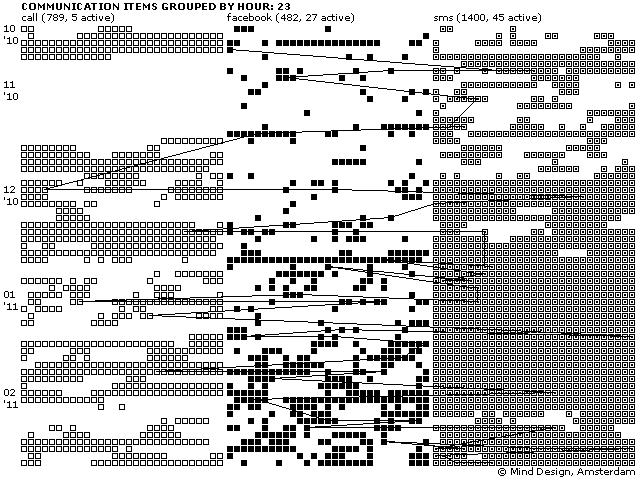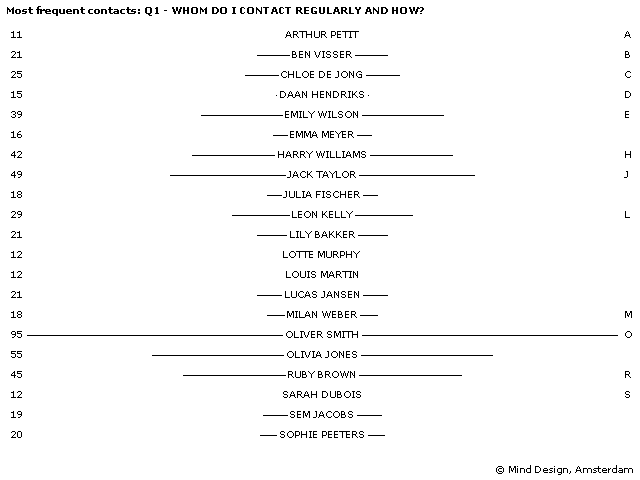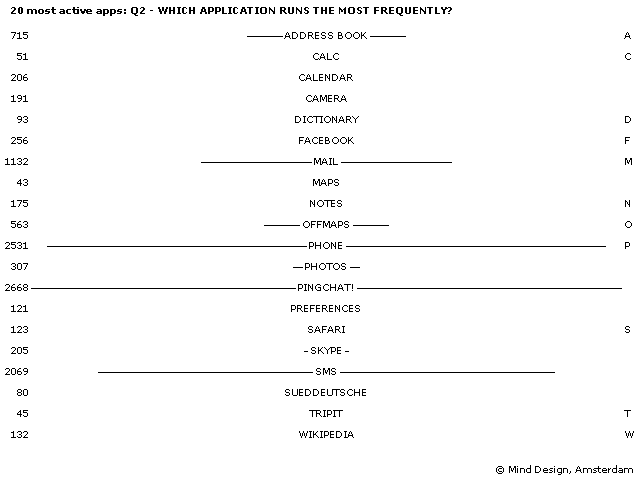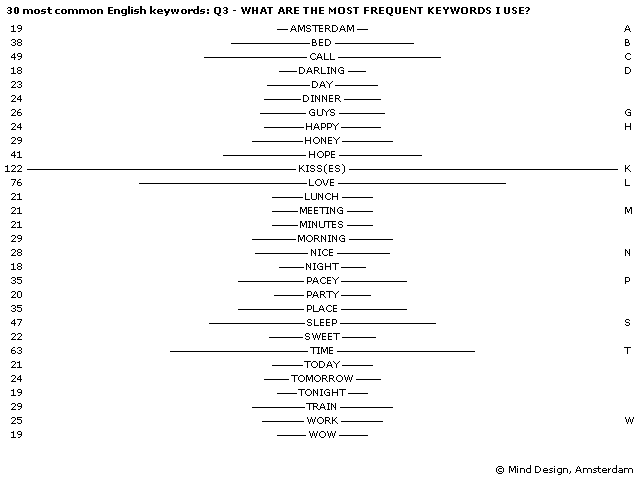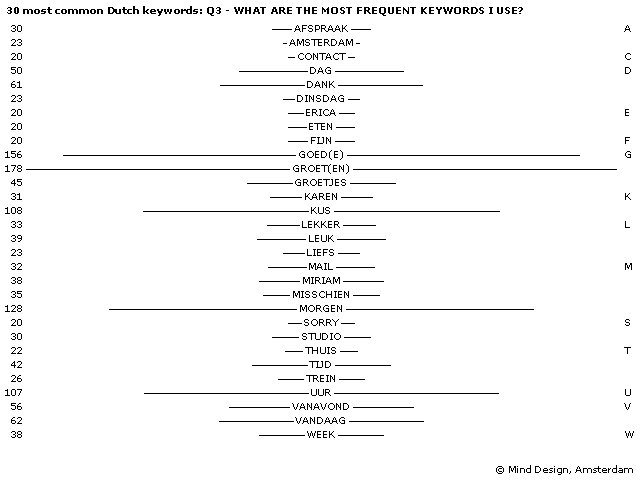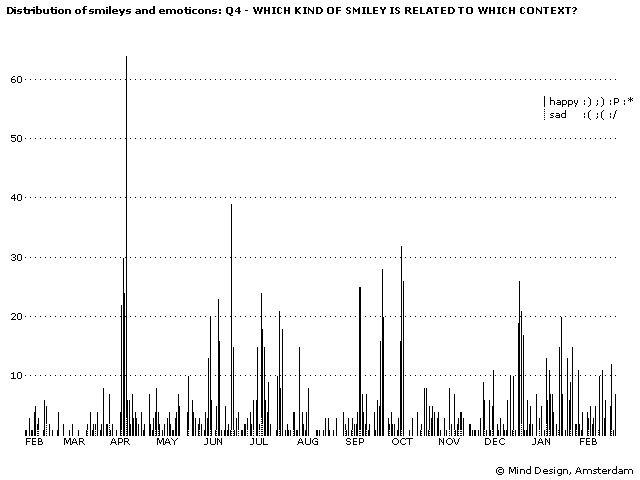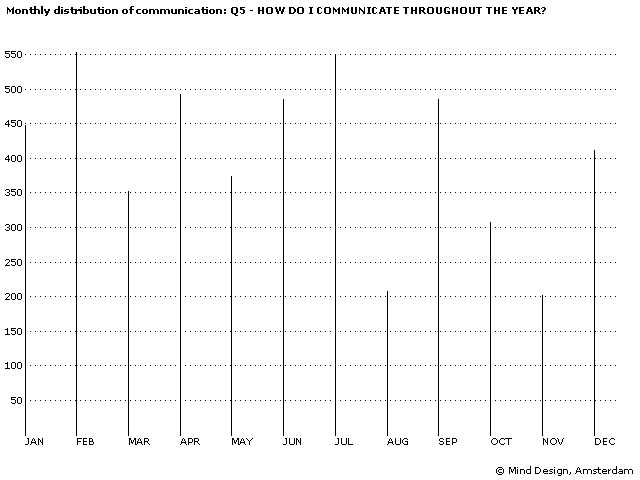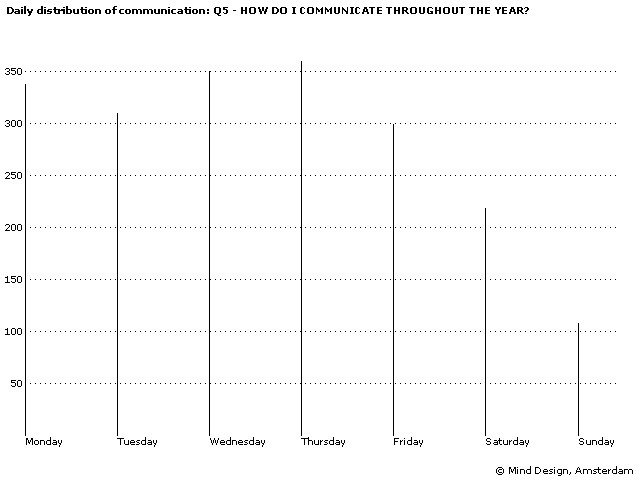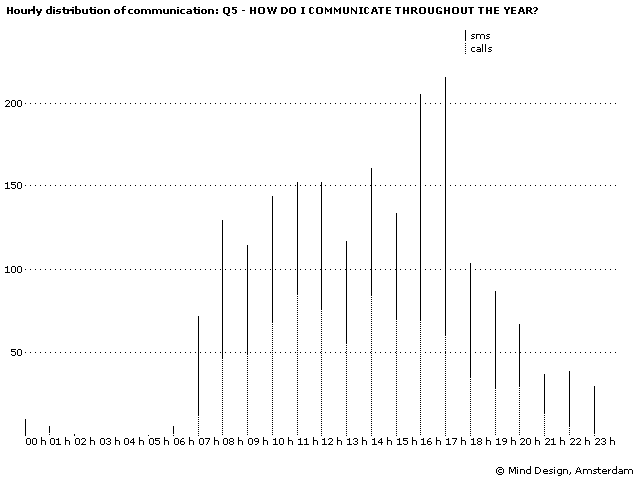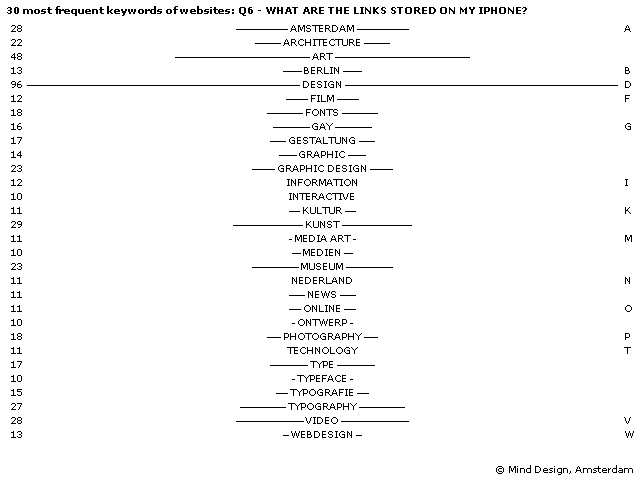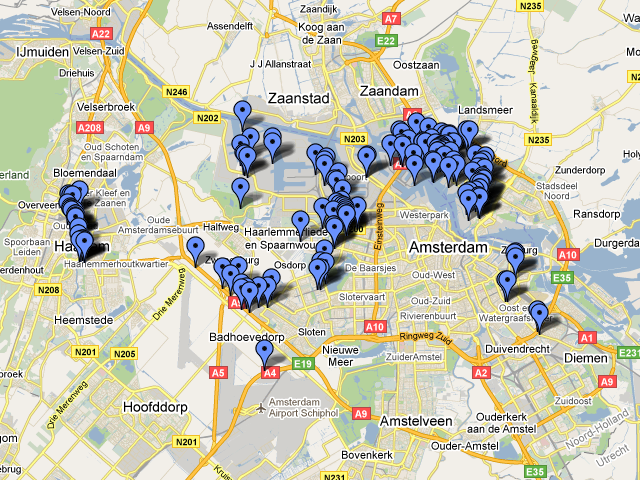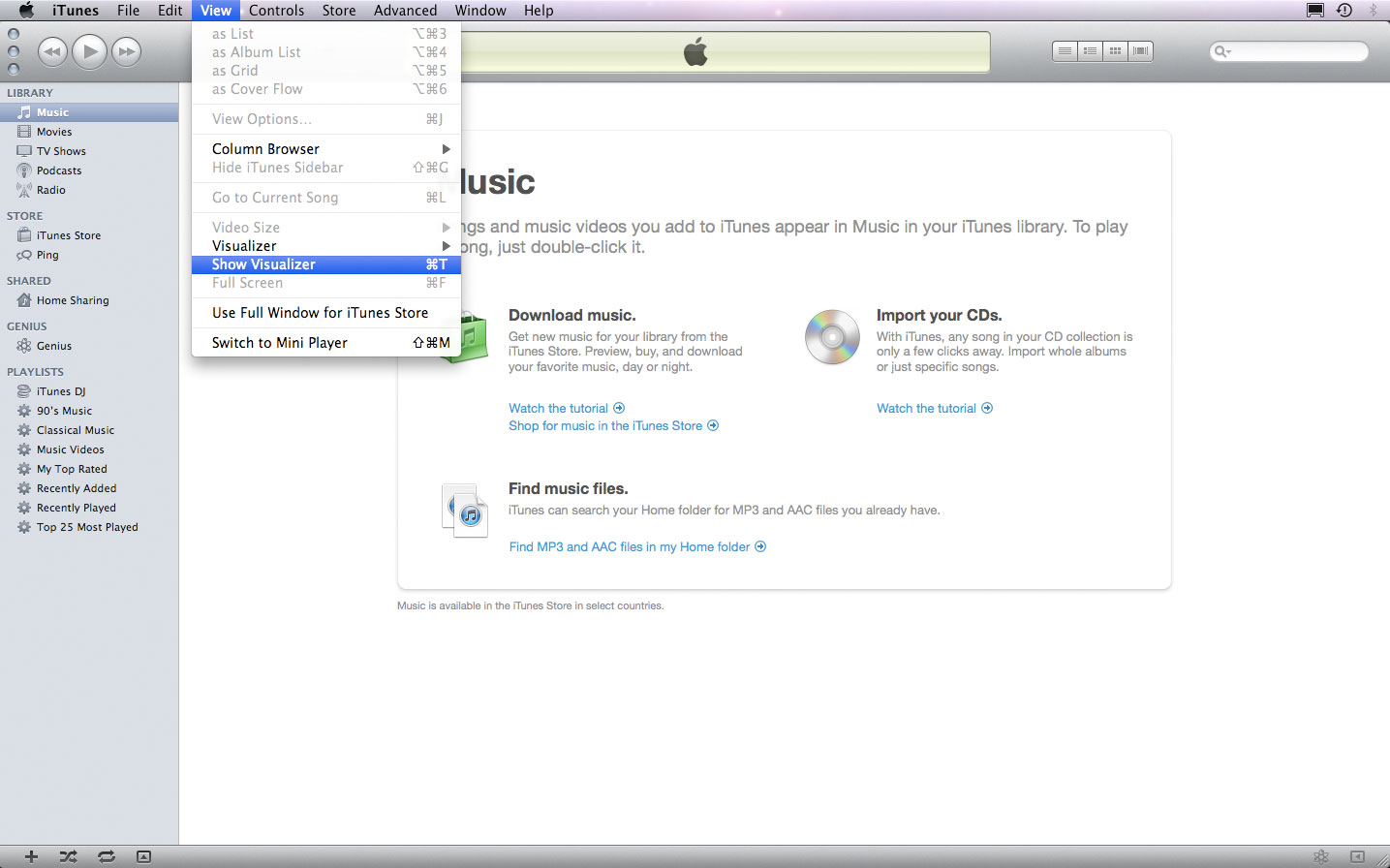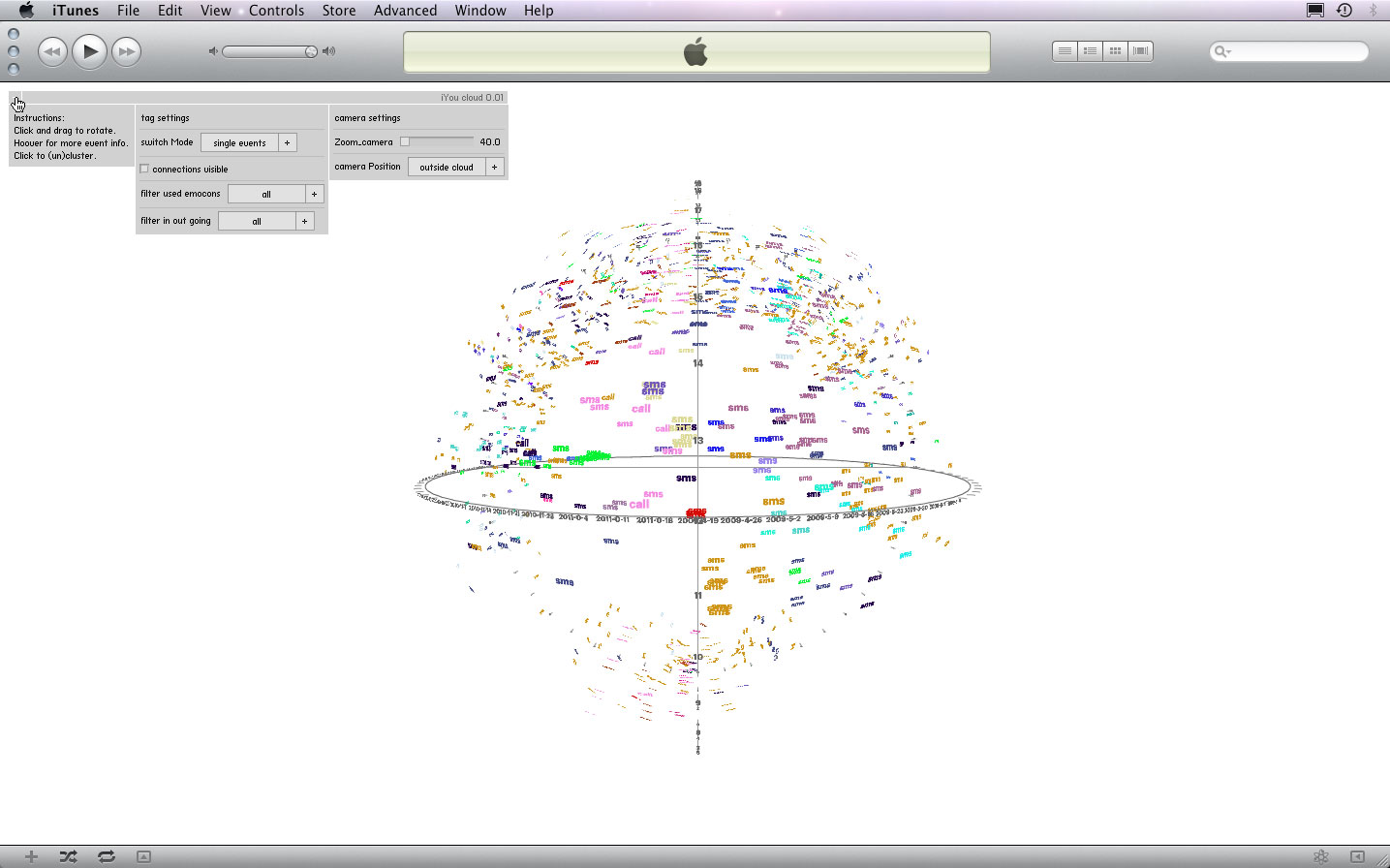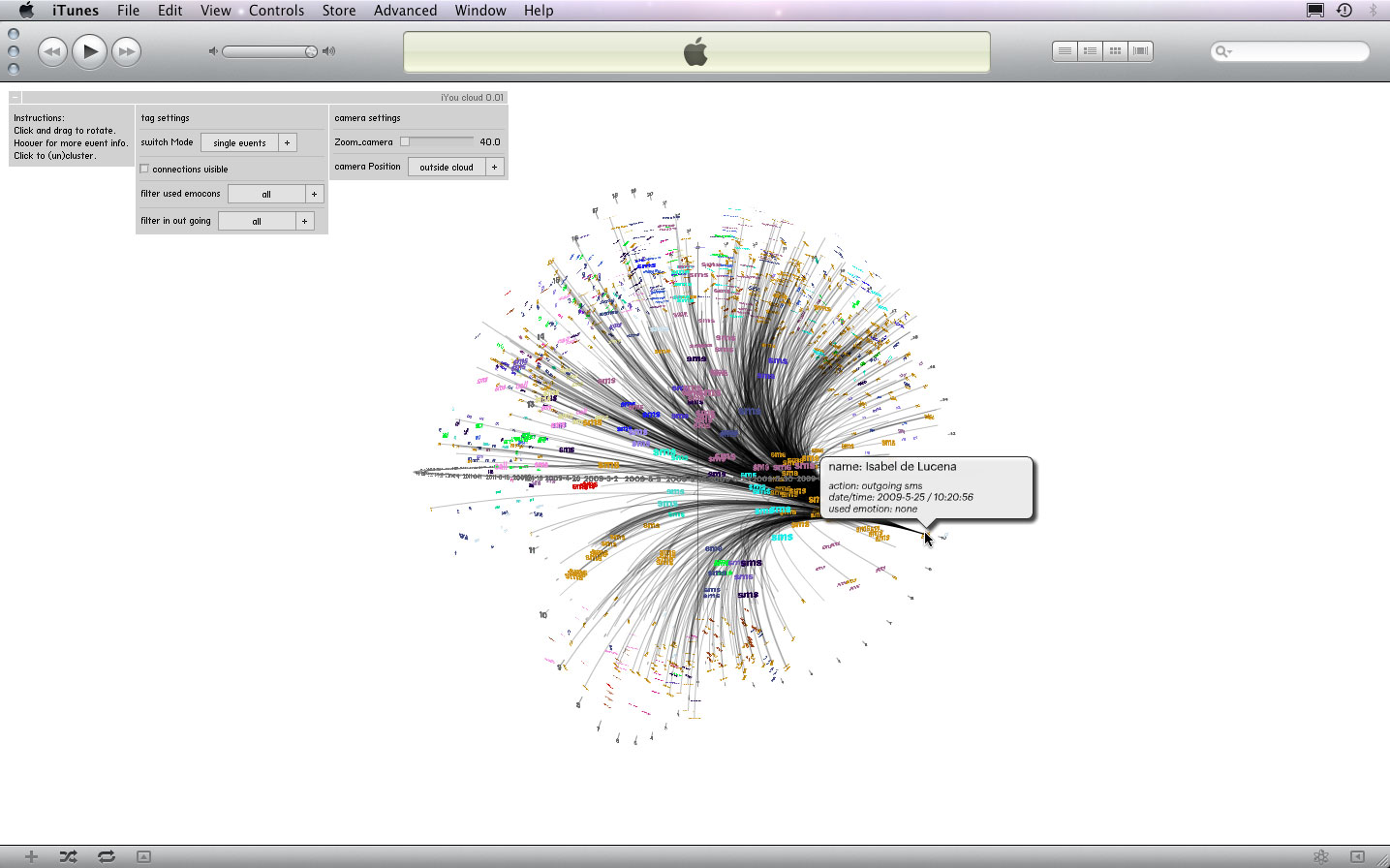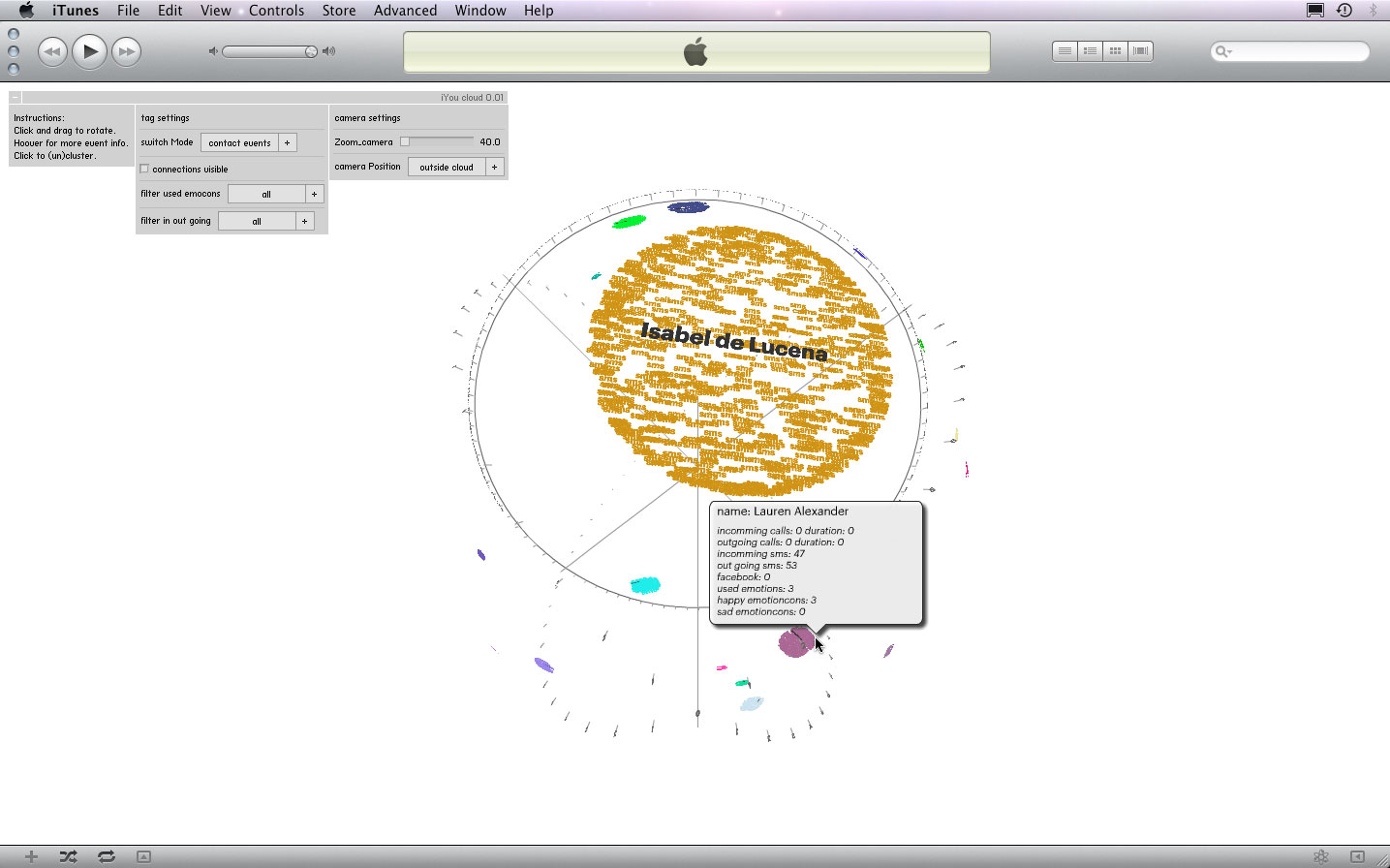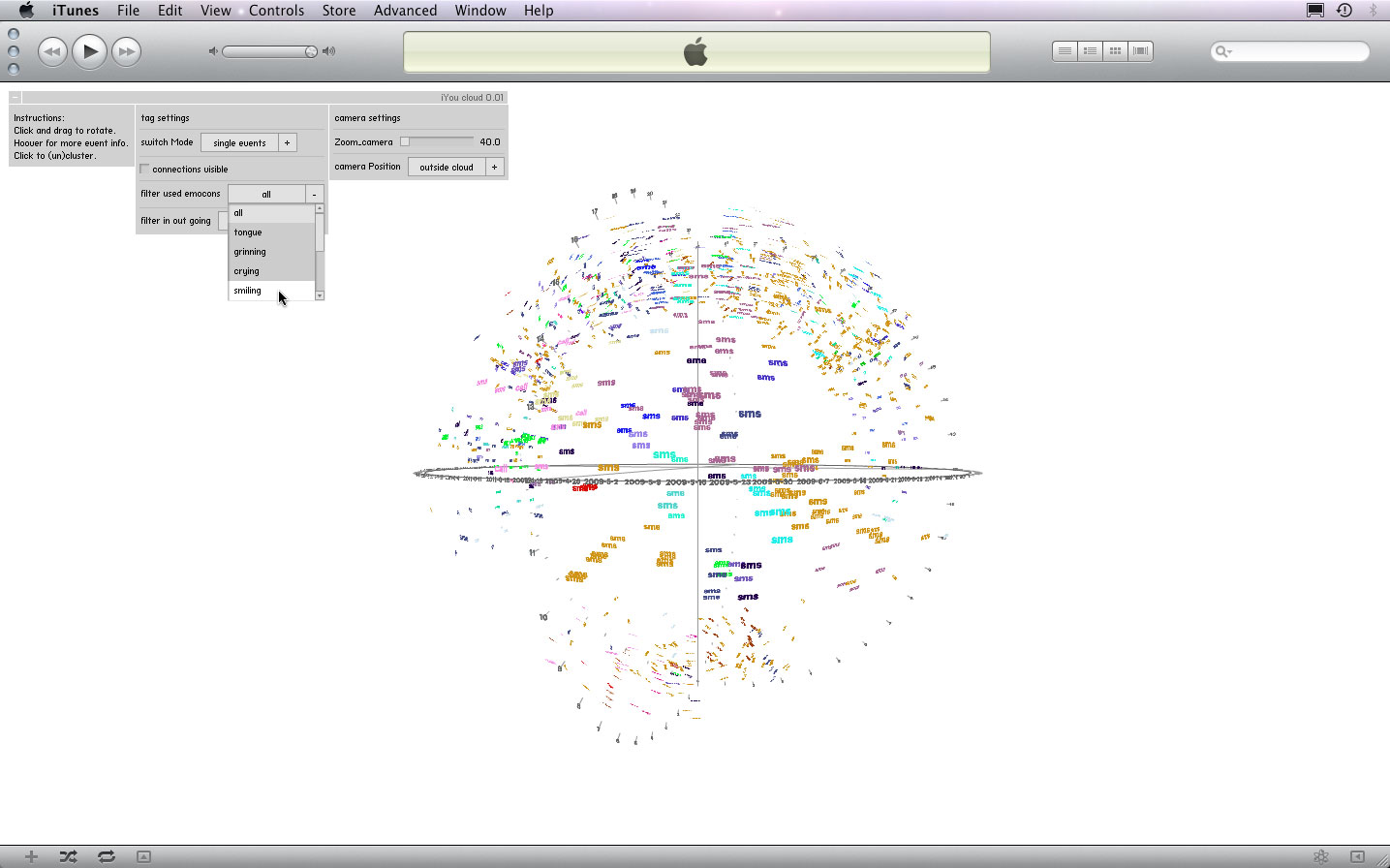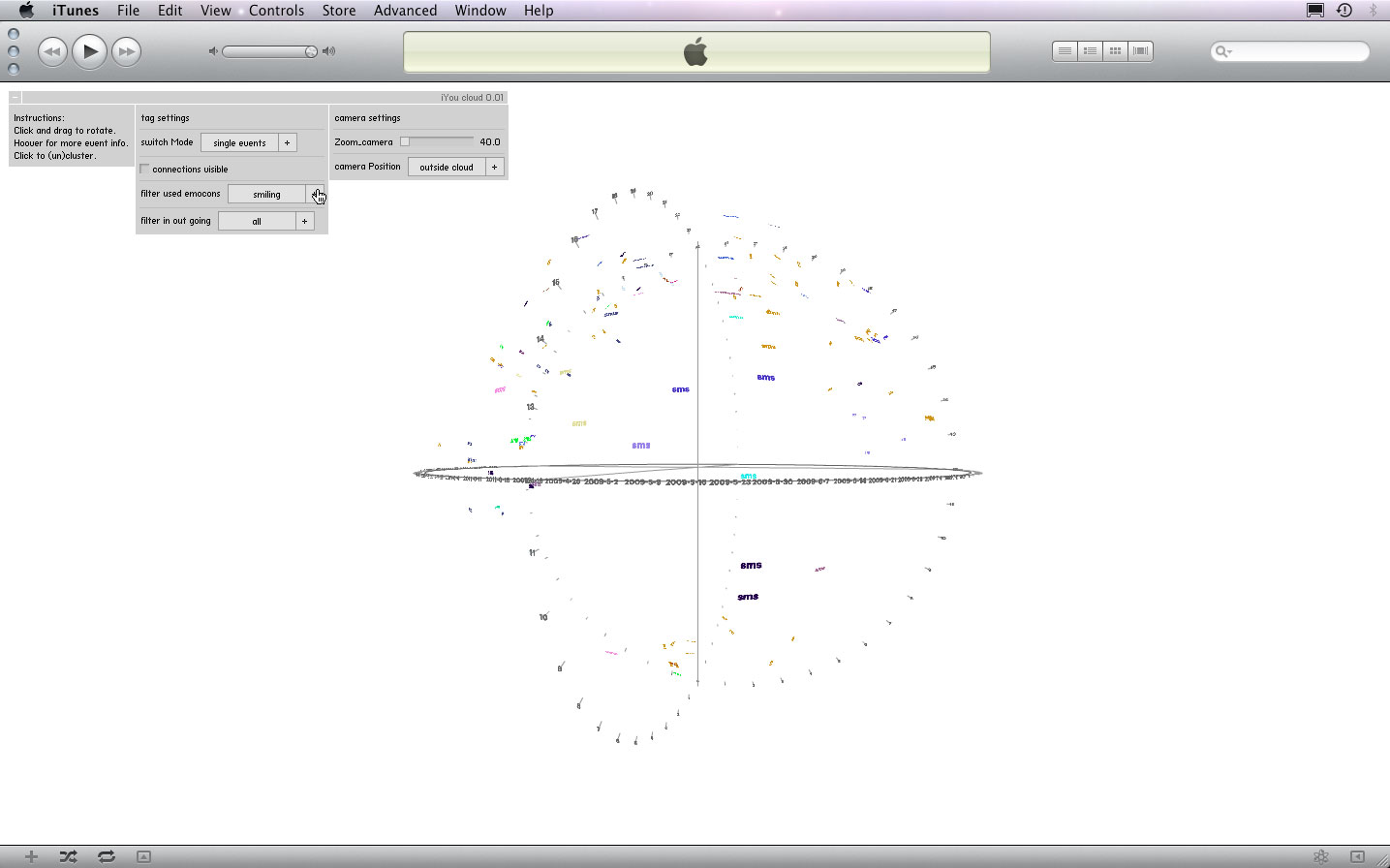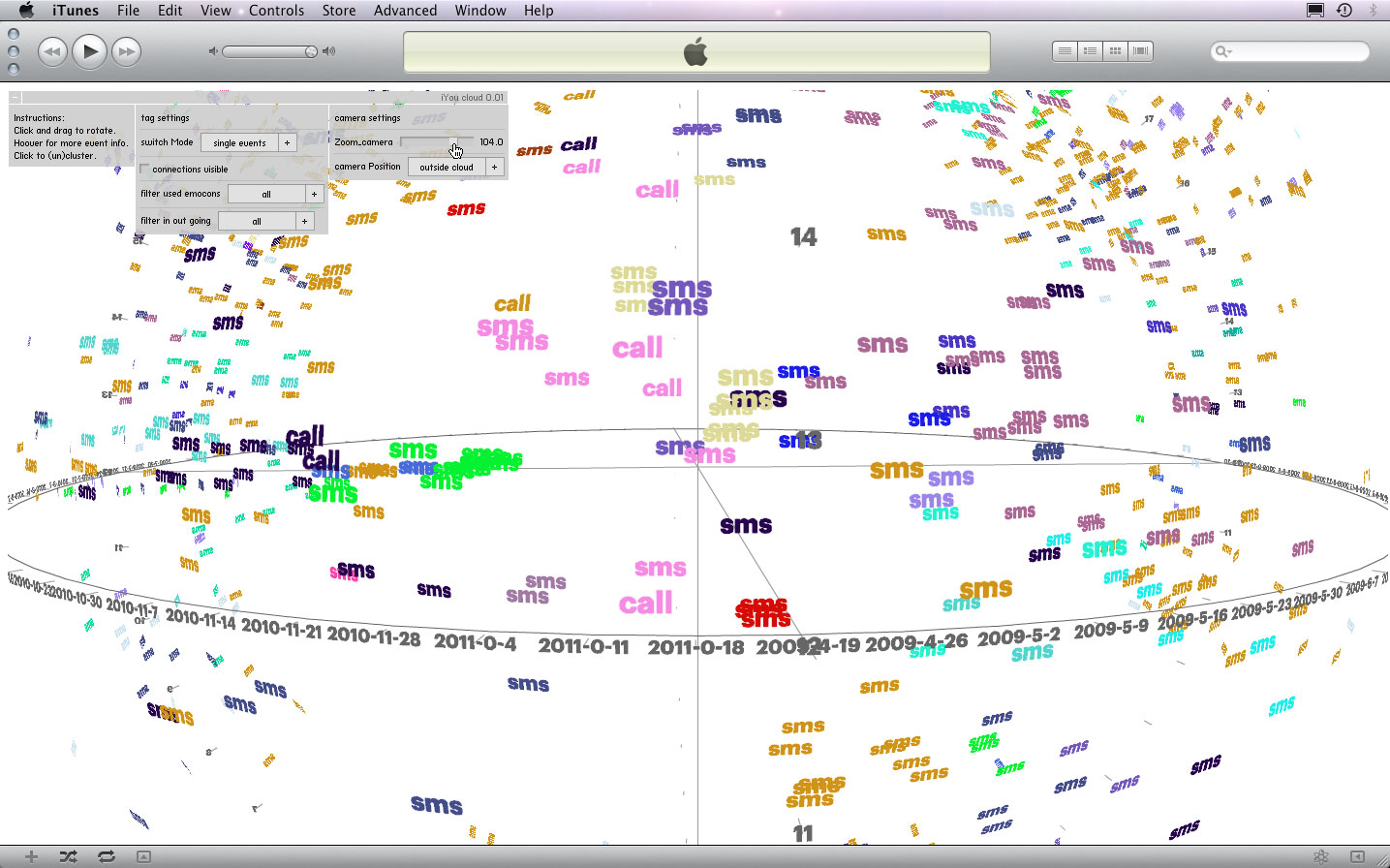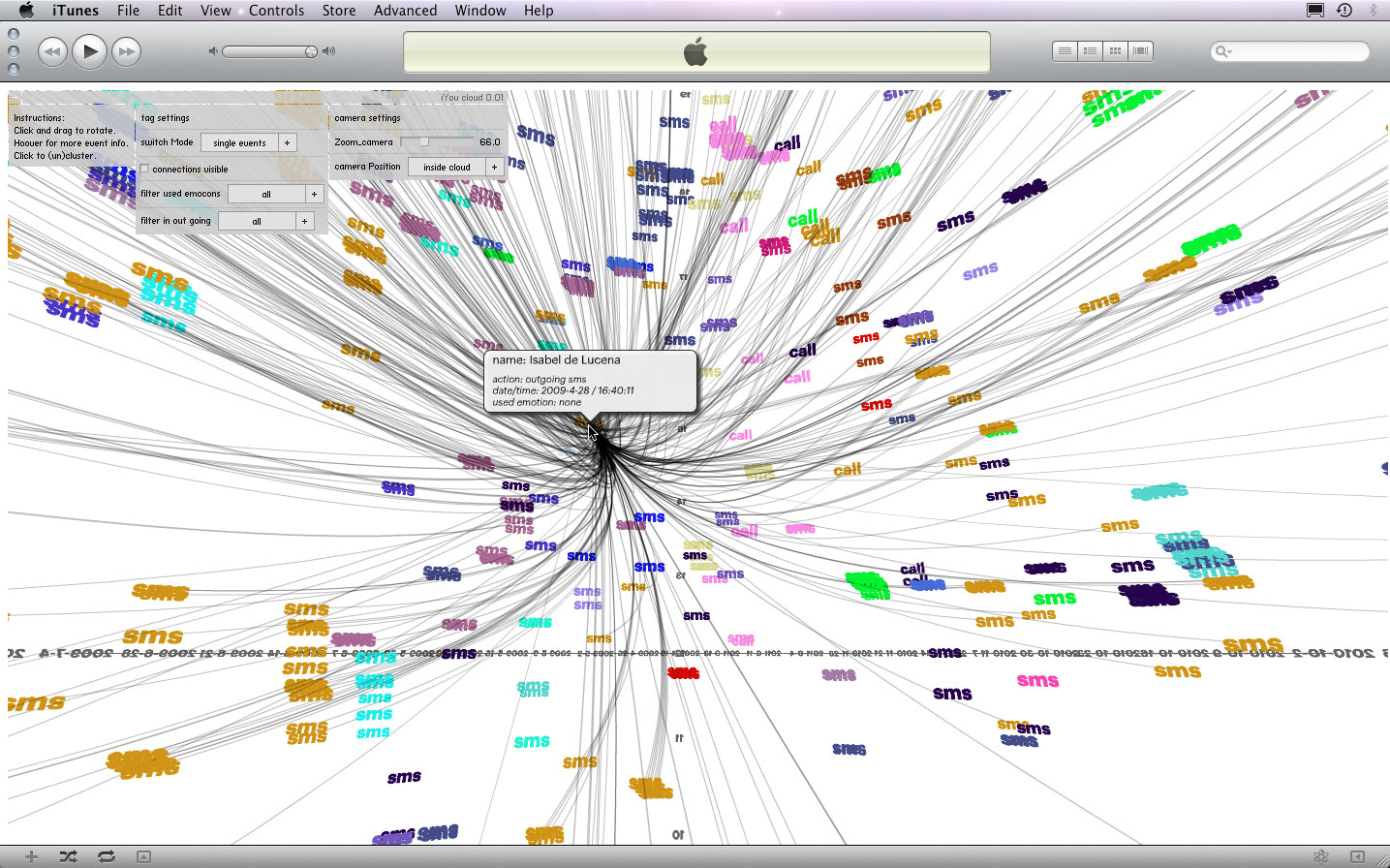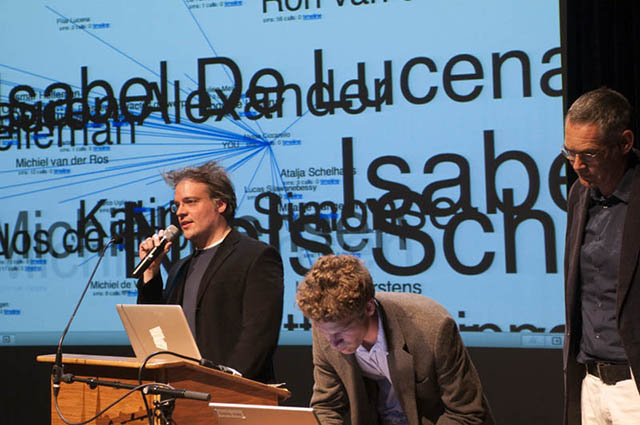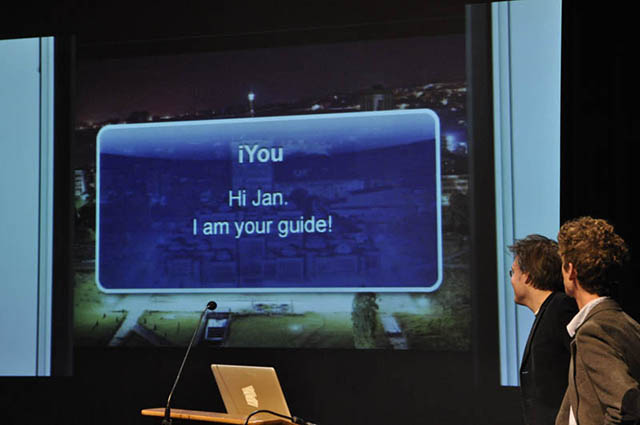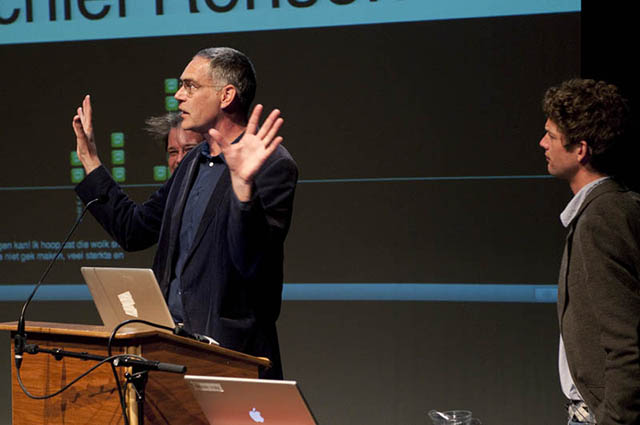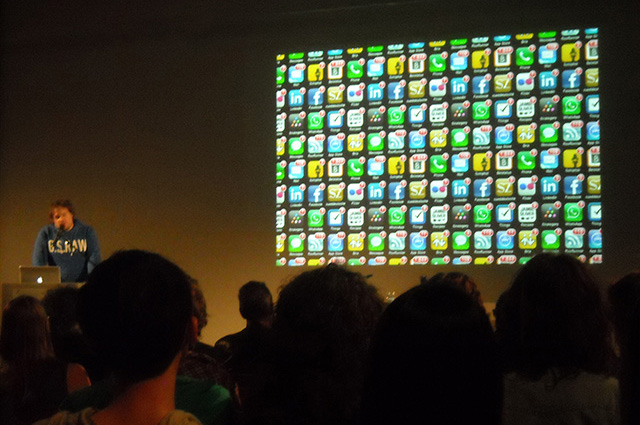Challenge
Mobile phones have long since stopped being mere communication tools. With the introduction and continued development of the smartphone, mobile devices have increasingly developed into universally deployable digital helpers, ubiquitous tools for multi-form communication. In doing so they store an ever-increasing amount of personal data: sms, movies, pictures, call histories, but also emails, social network events and so on.
Data management rarely goes further than grouping and categorizing information in simple categories like time, address, media type. But what if smartphones were smart enough to link data semantically across various media types? What if new stories emerge from our personal data archives? And what if the smartphone could be a tool that helps us filter the never-ending information overload?
Introducing iYou™
iYou™ is a personal, mobile data guide, which confronts the user with a detailed profile derived purely from his media behavior. Conceptualized for iPhone and Android, the application aggregates, clusters and visualizes data the user never knew was collected. It is designed to break the predefined structure of the data buried in various applications and present it non-hierarchically instead.
iYou™ initially began as a research project to make private communication patterns transparent and encourage their understanding. The idea was to create not only statistics based on the data physically stored on the smartphone, but also to allow the user to interpret pieces of information that he unconsciously accumulates day by day.
In their project → iPhone Tracker, Alasdair Allan and Pete Warden revealed that the iPhone was gathering years of data tracking the locations of the GSM and Wi-Fi networks the user was connected to. By doing so, Apple’s iPhone is leaving behind a clear picture of the user’s personal whereabouts and preferred locations. This database on its own is already a valuable source of information. And when combined with other easily available sources, it becomes a profitable tool for business – a tool that should be under control of the user!
It seems Johann Wolfgang von Goethe (1749–1832) had a similar vision when he said “Tell me whom you frequent, and I will tell you who you are.” Even centuries ago, people realized that our relationships define who we are. These days, we don’t even have to say anything, our smartphone will speak for us. If only Goethe had an iPhone…
Media literacy
The goal of the project is to create a personal, mobile data guide, which reflects directly on the media habits of a mobile phone user. It addresses relevant issues of contemporary media:
- insight into the data stored on a mobile phone (media literacy)
- mobile communication behavior as part of your identity
- awareness of how personal data can be exploited by third parties
- mastering the problem of daily data overload
The project aims to contribute to and elevate the debate on media literacy. The current discussion focuses largely on online behavior and the risks involved. Media literacy, however, concerns the skills and the mentality that people need to consciously, critically and actively participate in the technically mediated world — no matter what medium: mobile, online or otherwise.
